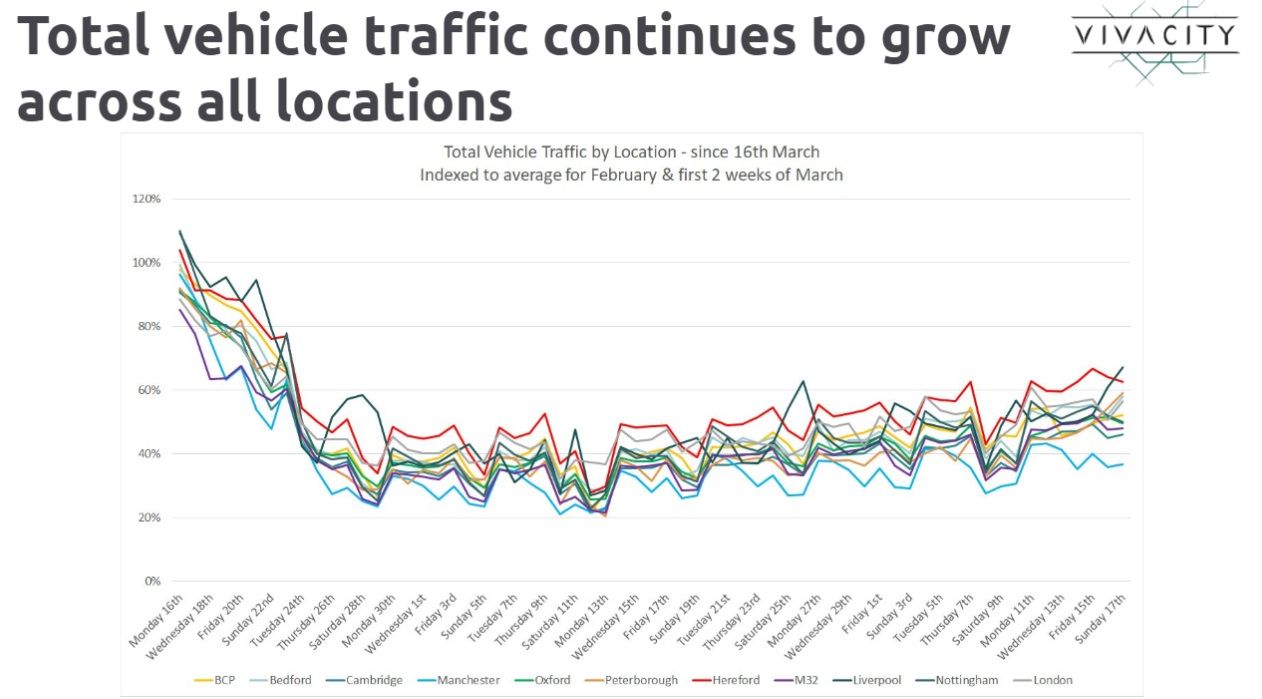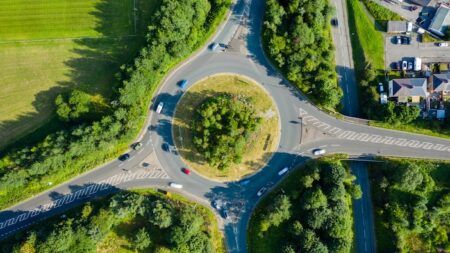Vivacity Labs, a UK based transport AI (artificial intelligence) company, has released a new product to support UK councils in their efforts to increase uptake in active travel as the public begins to return to work during the Covid-19 crisis.
The new system allows authorities to not only count cyclists, but also to understand the interaction patterns, such as dangerous undertaking manoeuvres or cyclists using pavements, which enables authorities to improve safety for cyclists – one of the biggest impediments to more people using bicycles to get around.
The Department for Transport has said that Authorities should monitor and evaluate any temporary measures they install, with a view to making them permanent, and embedding a long-term shift to active travel as the nation moves from restart to recovery.
Vivacity Labs’ award-winning artificial intelligence technology already anonymously captures, classifies and tracks live transport usage, 24/7. During lockdown, Vivacity’s sensor data has often been quoted as a reliable source by much of the mainstream media. Crucially, Vivacity’s technology is highly reliable at gathering data on cycling, walking, and social distancing – all critical components of the government’s lockdown exit strategy.
Now, Vivacity can shine a light on behaviour at complex junctions. By examining the number of cyclists and other vehicles using junctions from different directions, authorities can improve their understanding of how cyclists are using the existing infrastructure, supporting future improvements.
This new product uses the same underlying video analytics technology as autonomous vehicles to really understand what is happening on the roads, extracting deep but anonymous insight into behaviour patterns.

“We have installed sensors for cycling with authorities from Oxford to Cambridge, London to Manchester,” says Vivacity CEO Mark Nicholson “However, the holy grail of understanding not just counts of cyclists but also behaviours, interactions, and turning movements has always been just out of reach. With this new tool becoming available now, authorities can plan safety interventions much more effectively”.
A well measured active travel policy has real-world health and economic impact, as Public Health England outlined in their recently published briefing document, which suggests that whilst motorised road transport has a role in supporting the economy, a rebalancing of our travel system is very much needed as physical inactivity directly contributes to 1 in 6 deaths in the UK and costs £7.4 billion (US$9bn) a year to business and wider society, with growth in road transport a major factor in reducing levels of physical activity and increasing obesity,
Councils all over the UK have been benefiting from Vivacity’s technology, with projects ranging from monitoring of air quality and active travel uptake in Manchester through to pedestrian and cyclist intervention outside schools in Bournemouth, to name but a few. Vivacity have even helped the redesign of road junction into a mini ‘Holland style’ roundabout providing cyclists with priority in Cambridge.
Projects to support active travel can be simple and highly effective, with Vivacity lending their vast experience to help councils deliver swift but sustainable impact, with the minimum of distraction at this challenging time. Please go to www.vivacitylabs.com/urgentactivetravel for more information on what can be done, including guidance on how to fund such projects.





